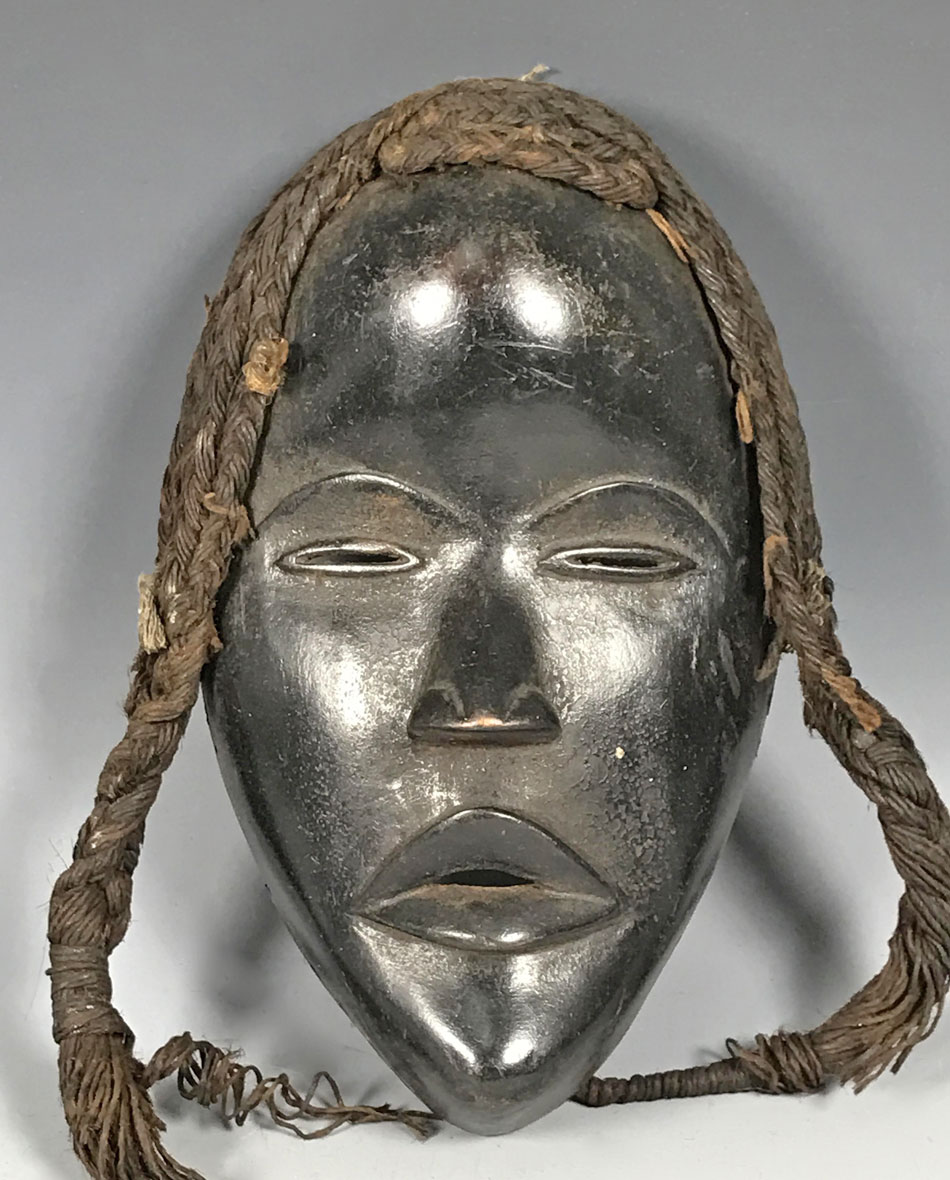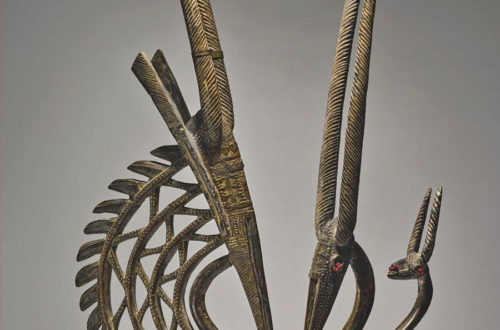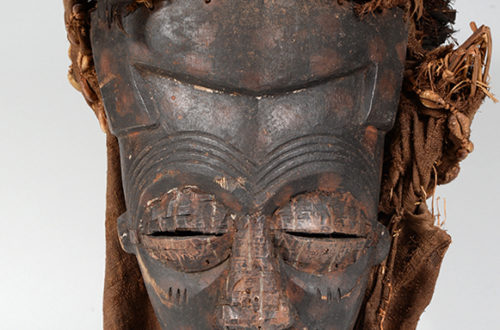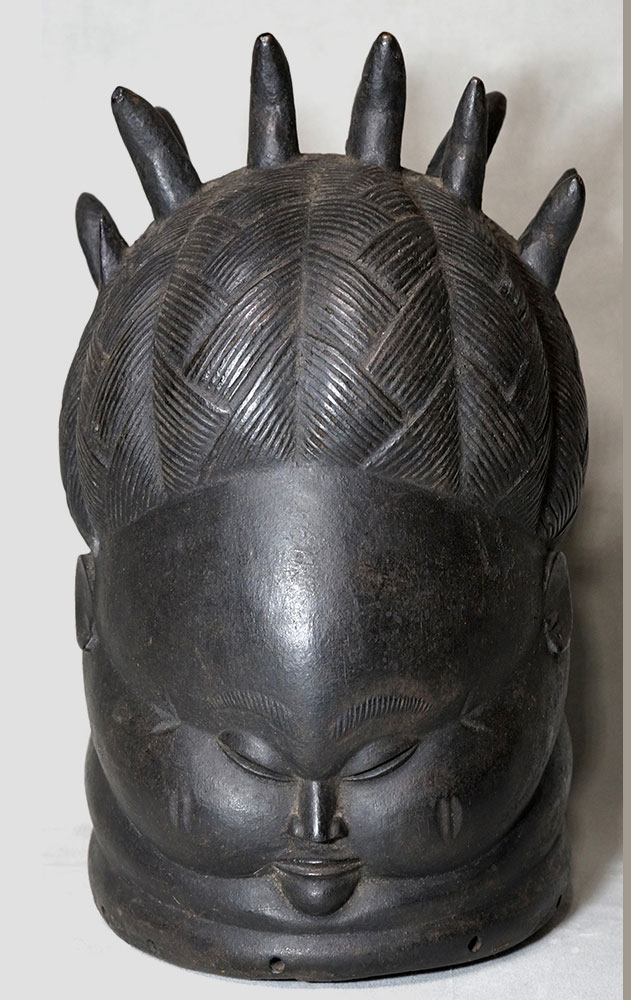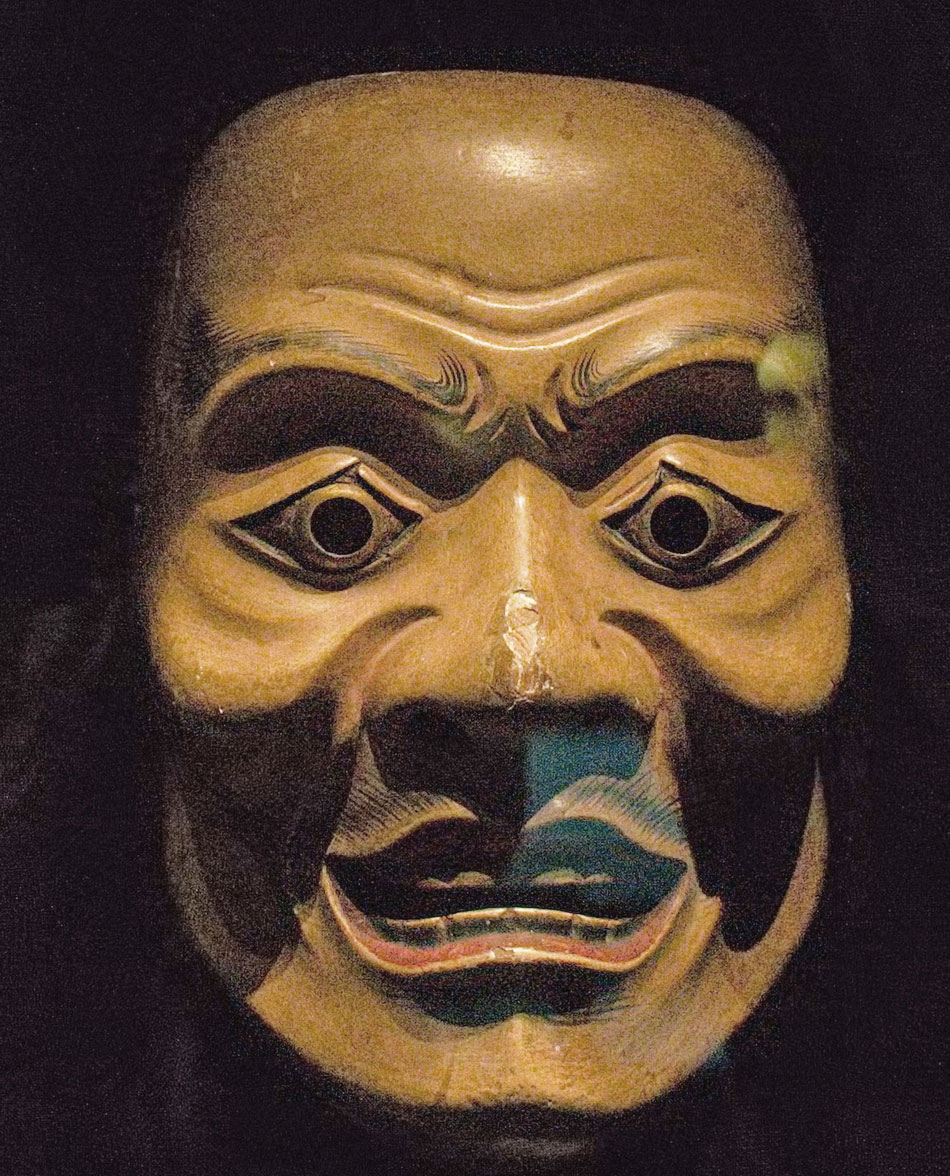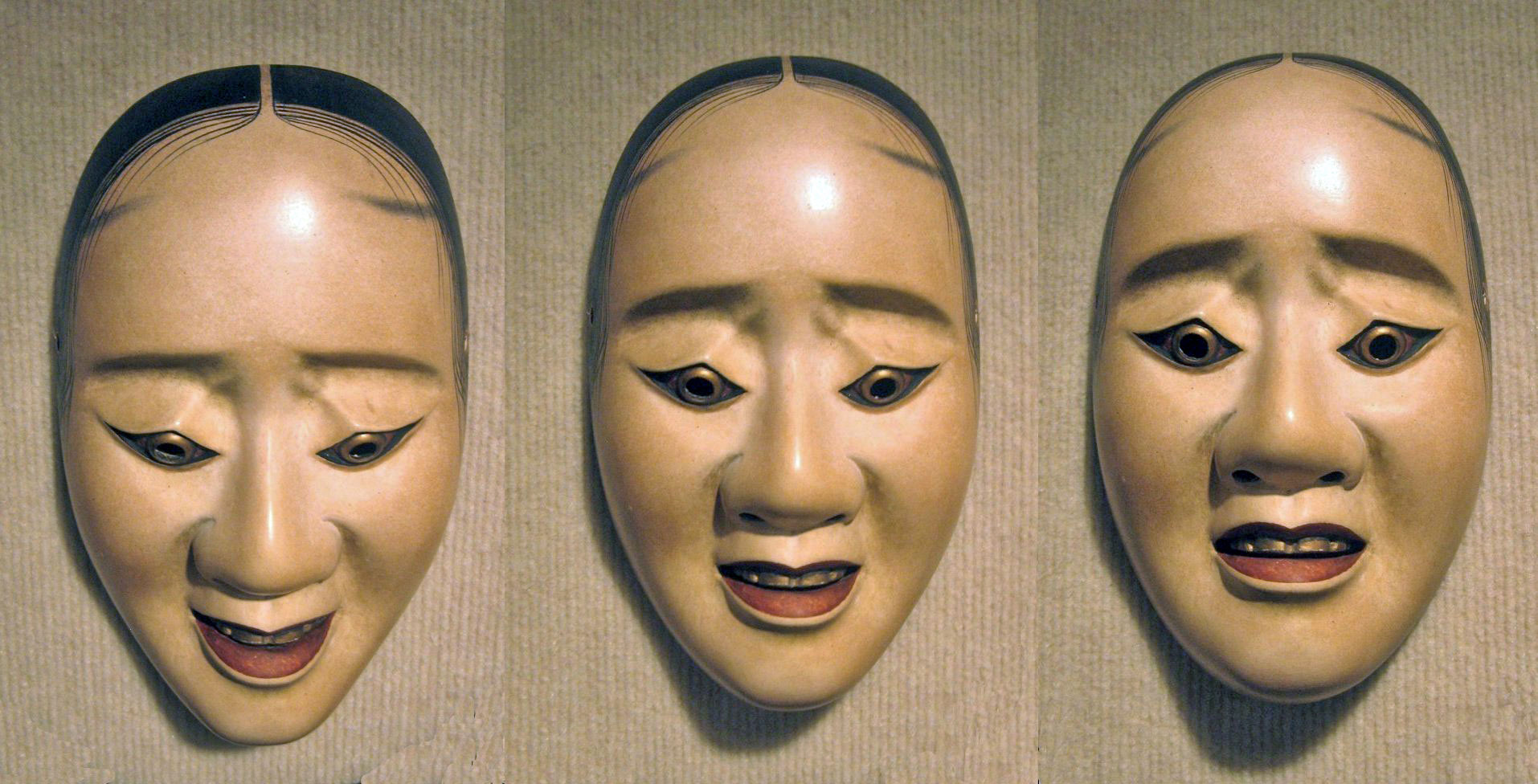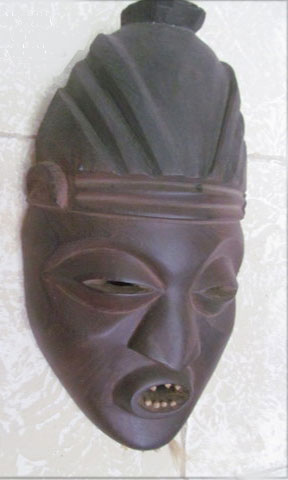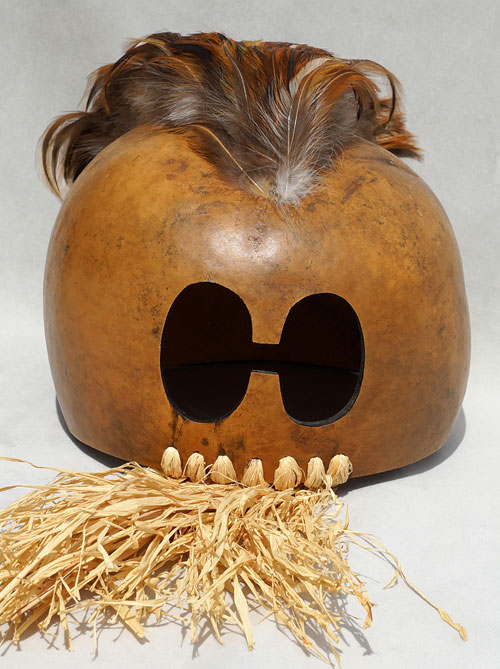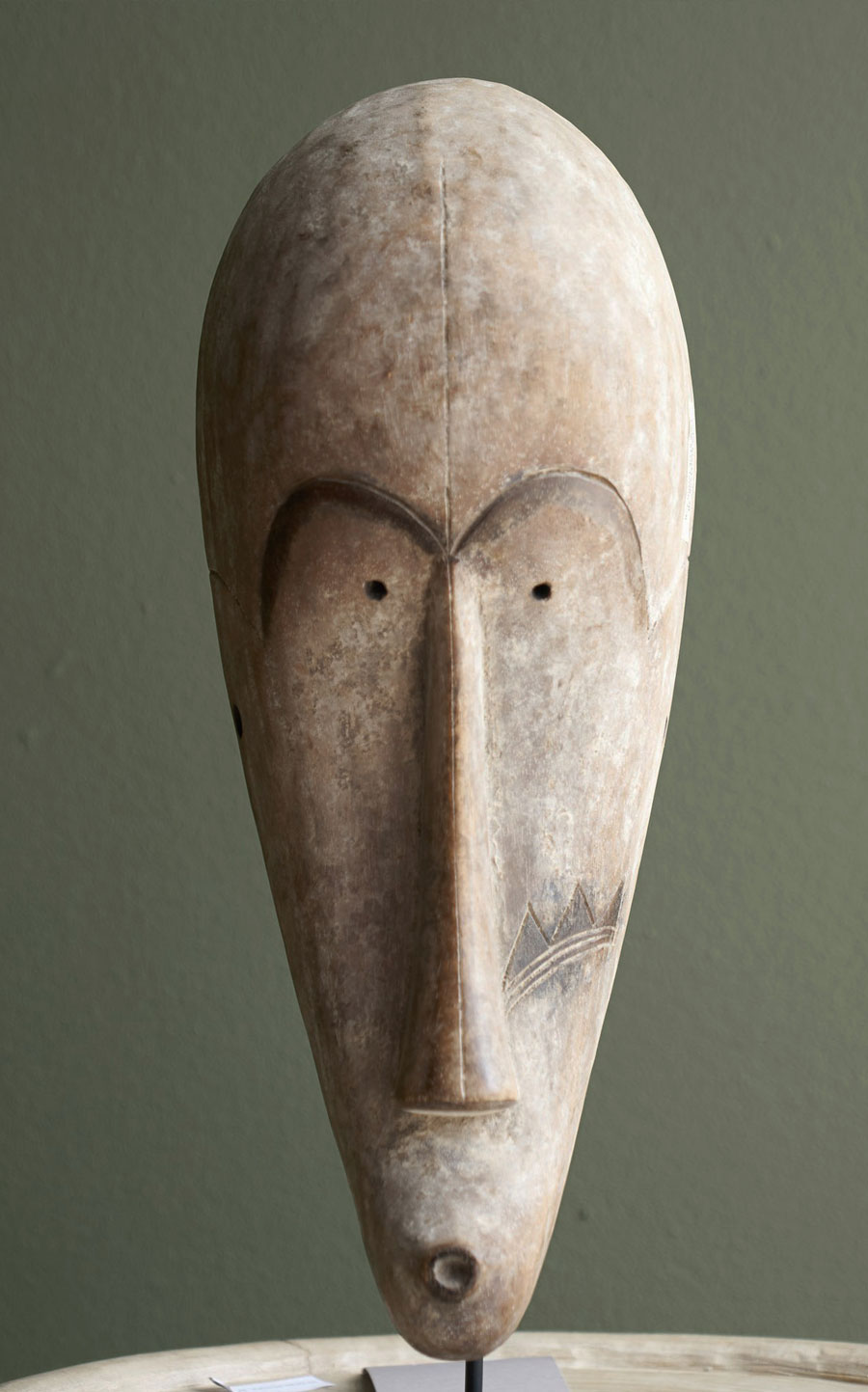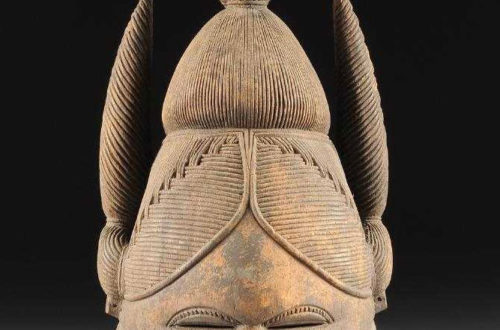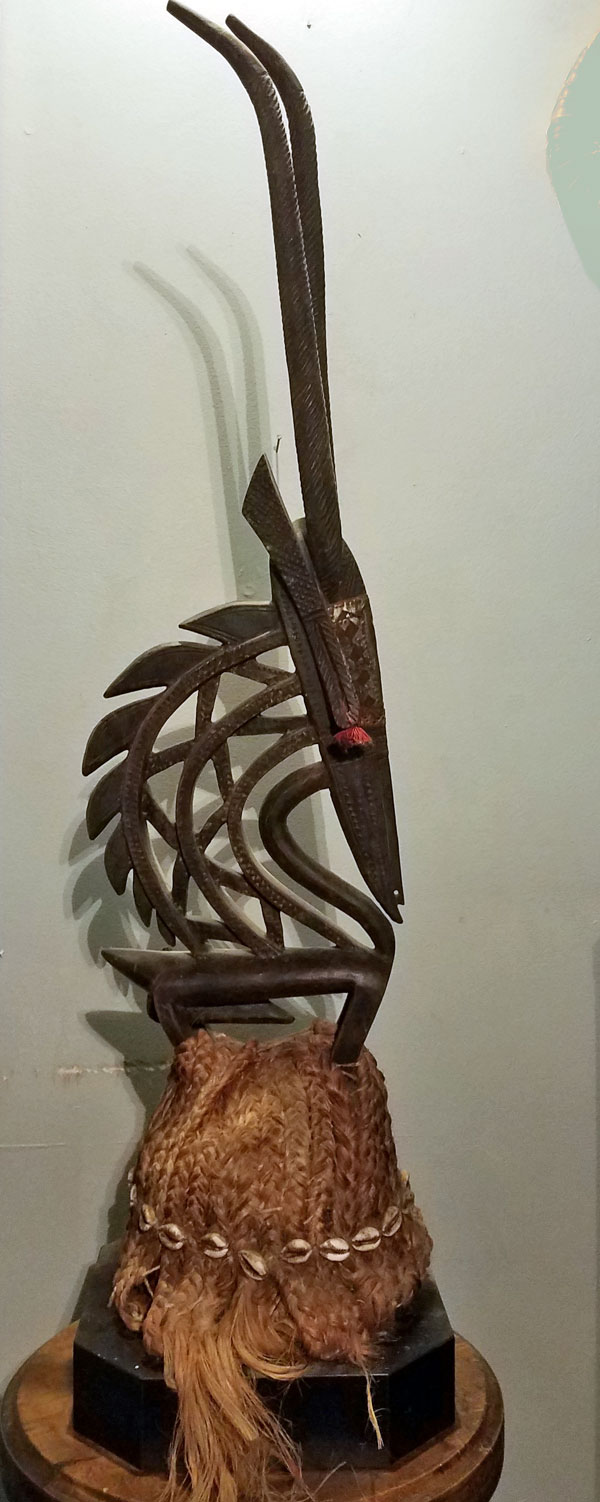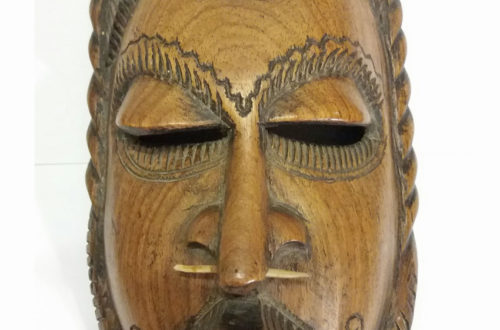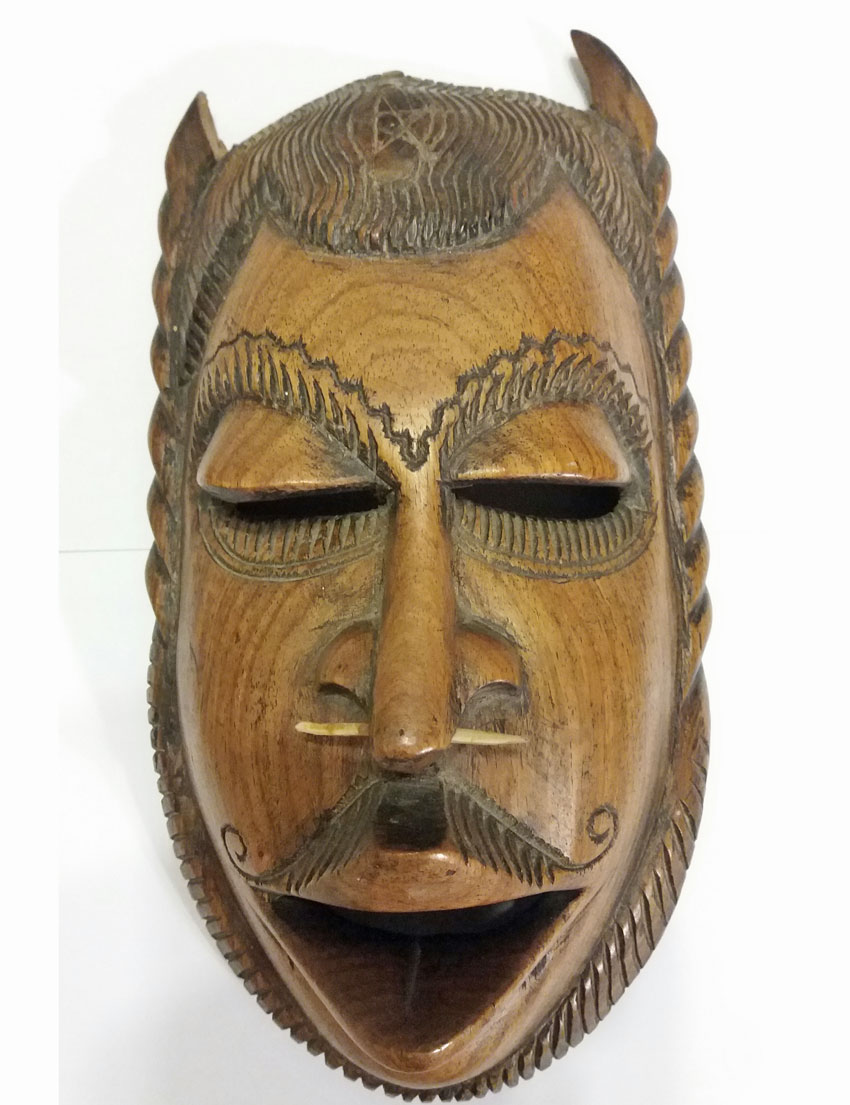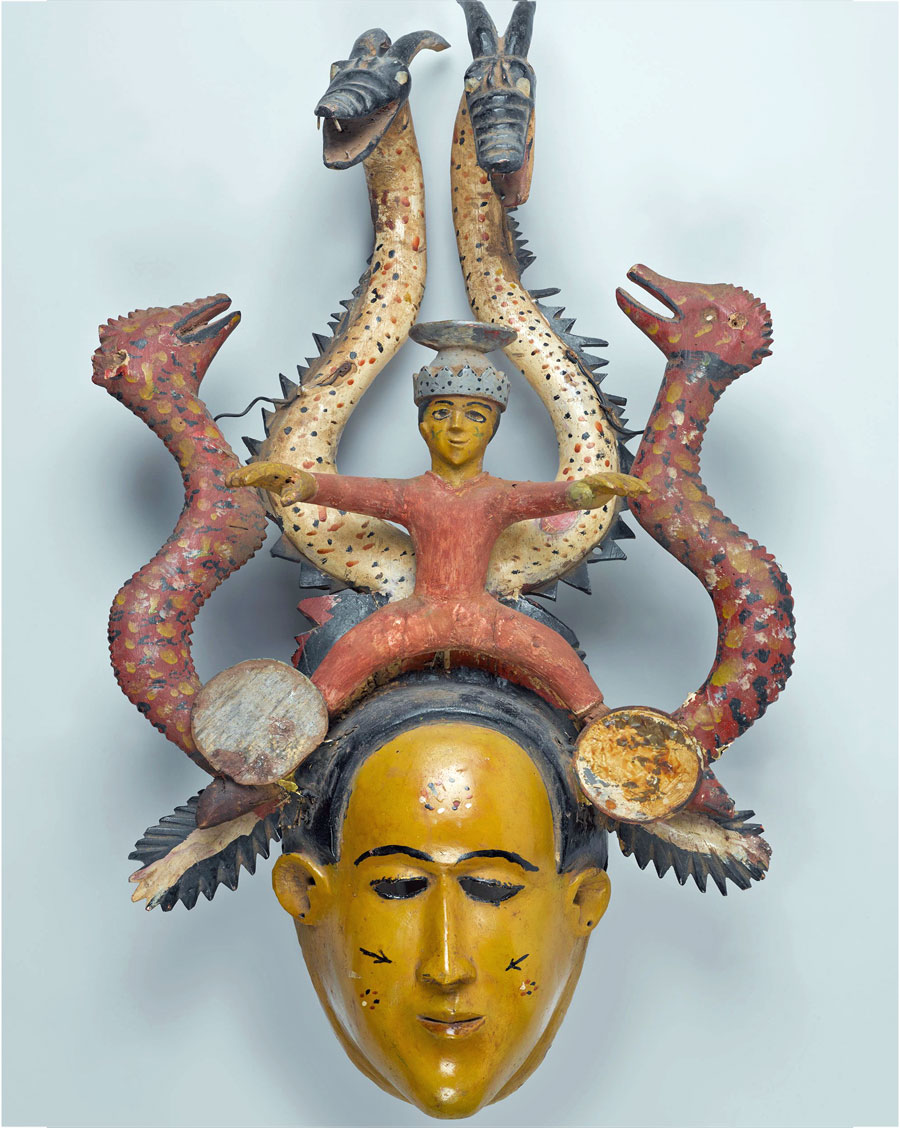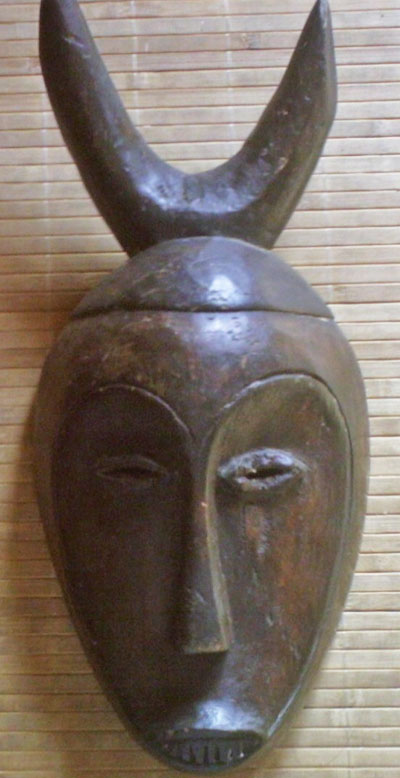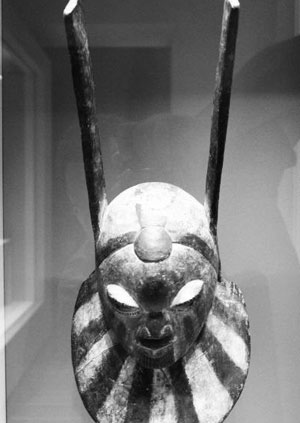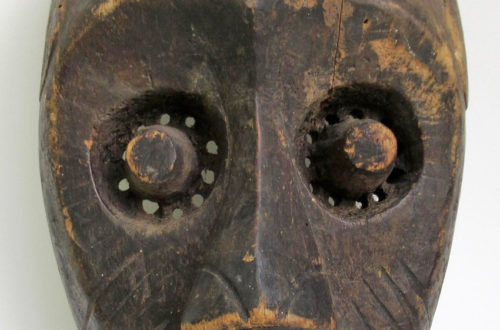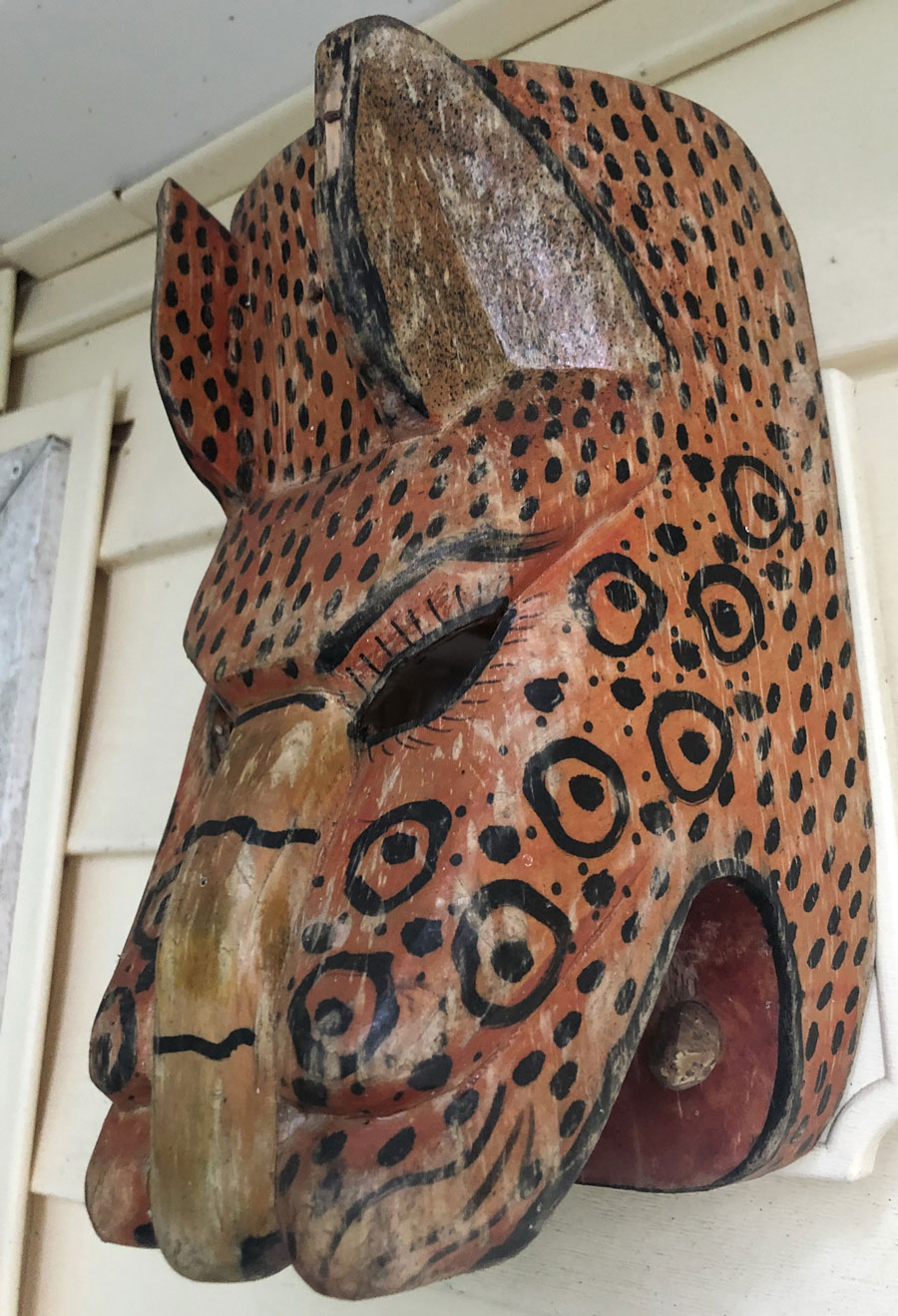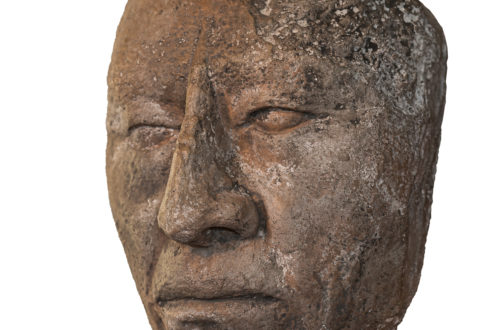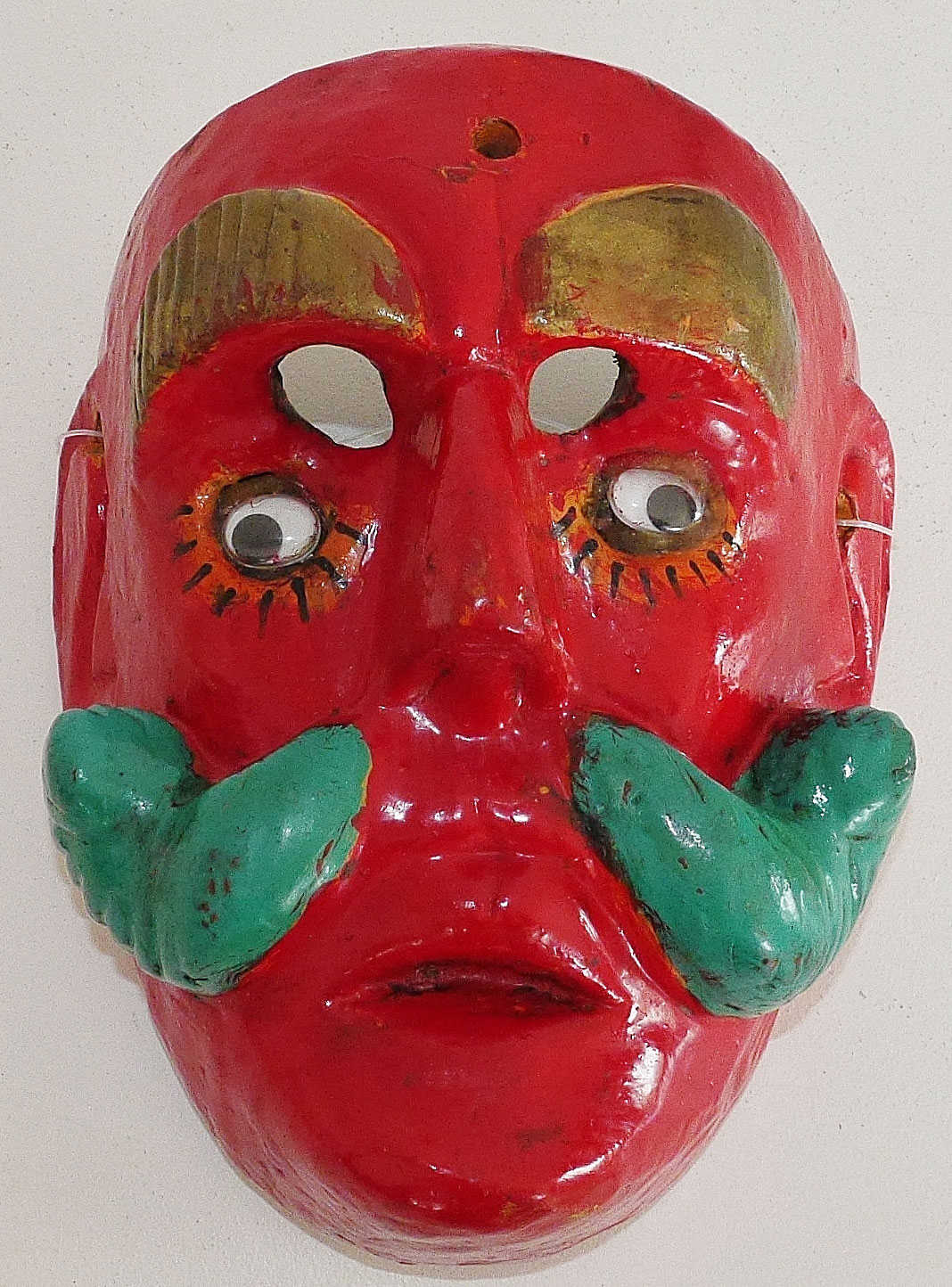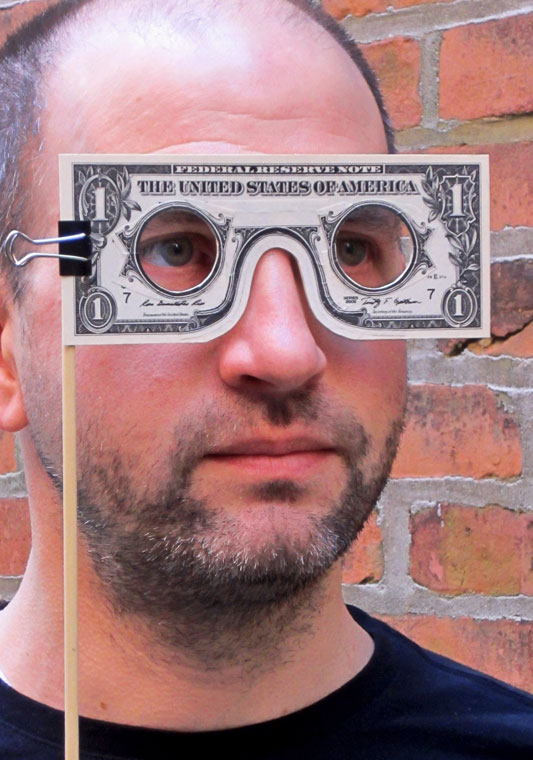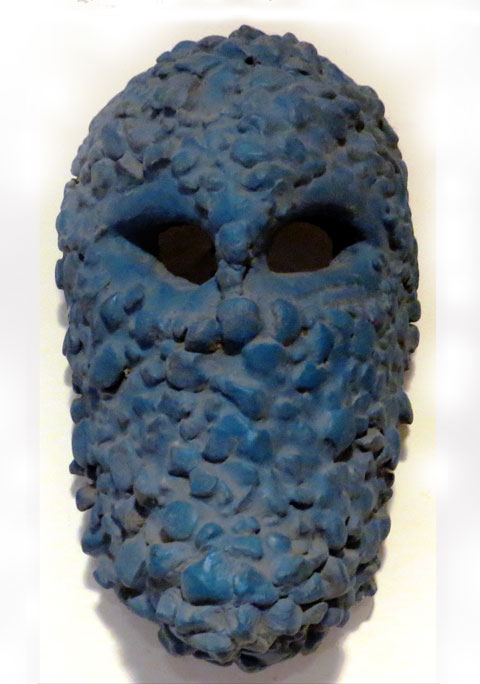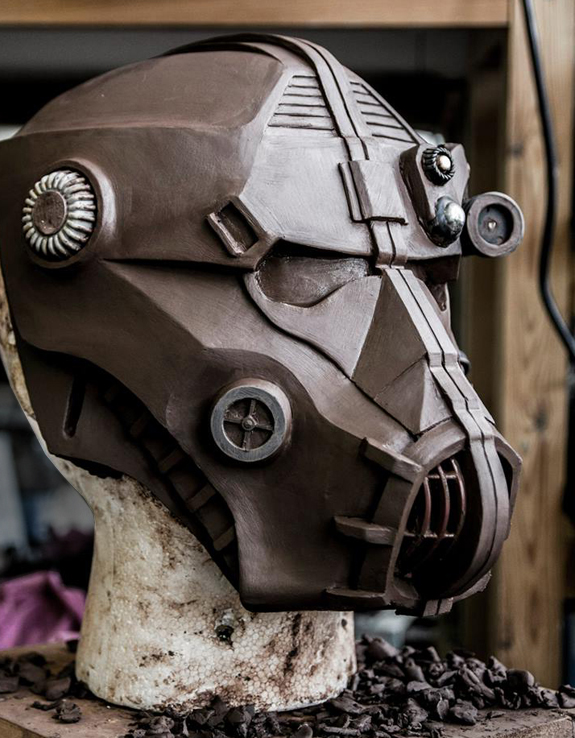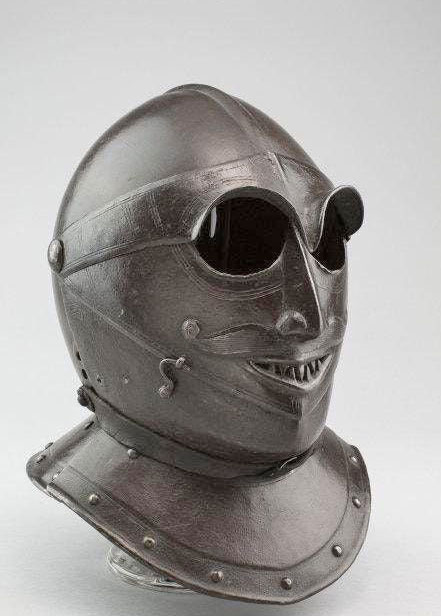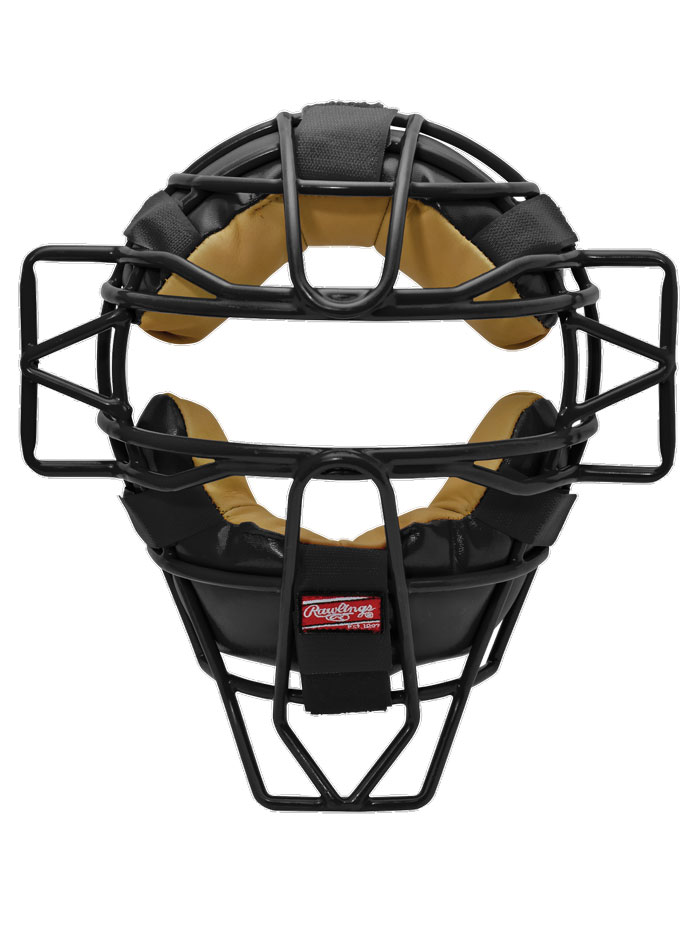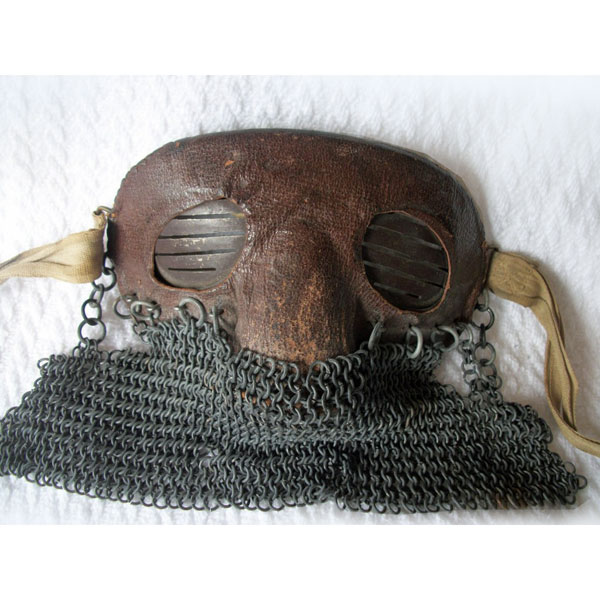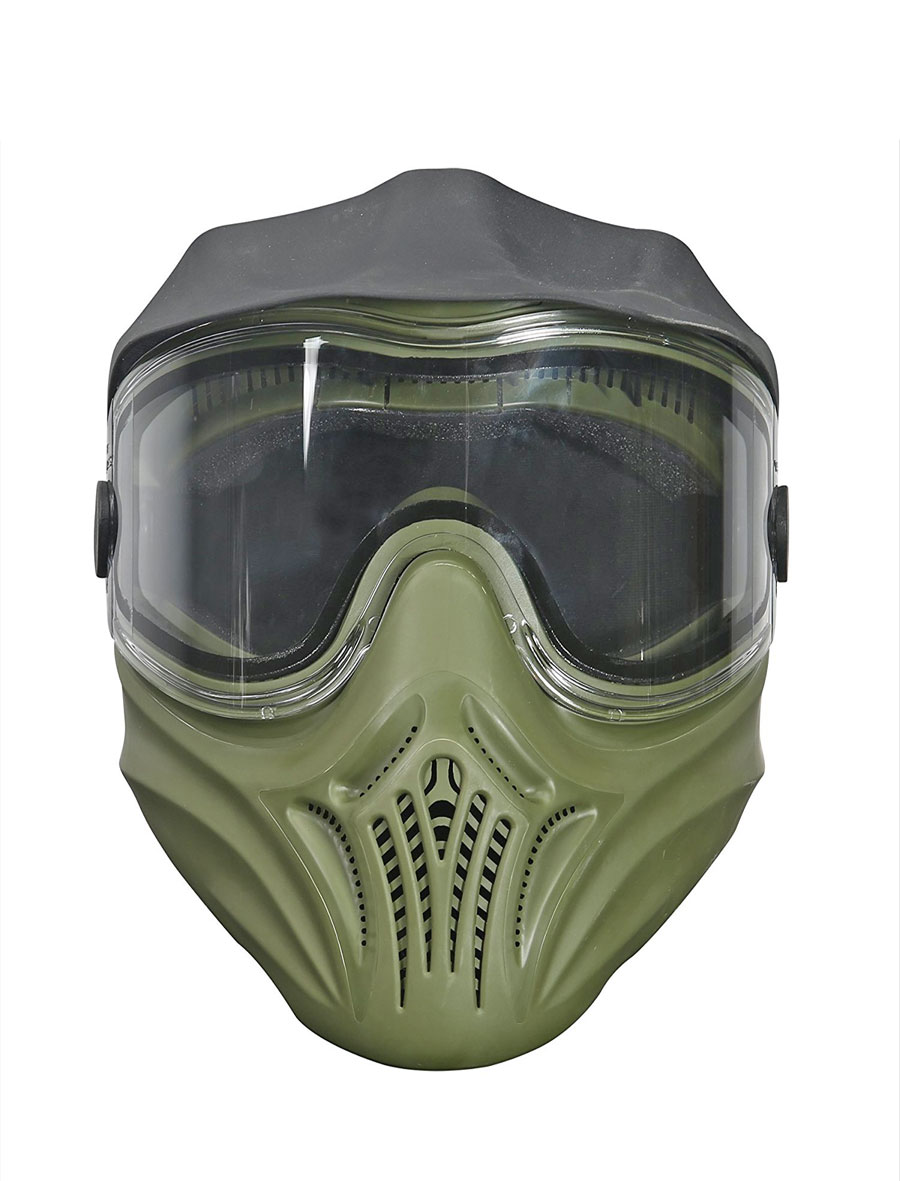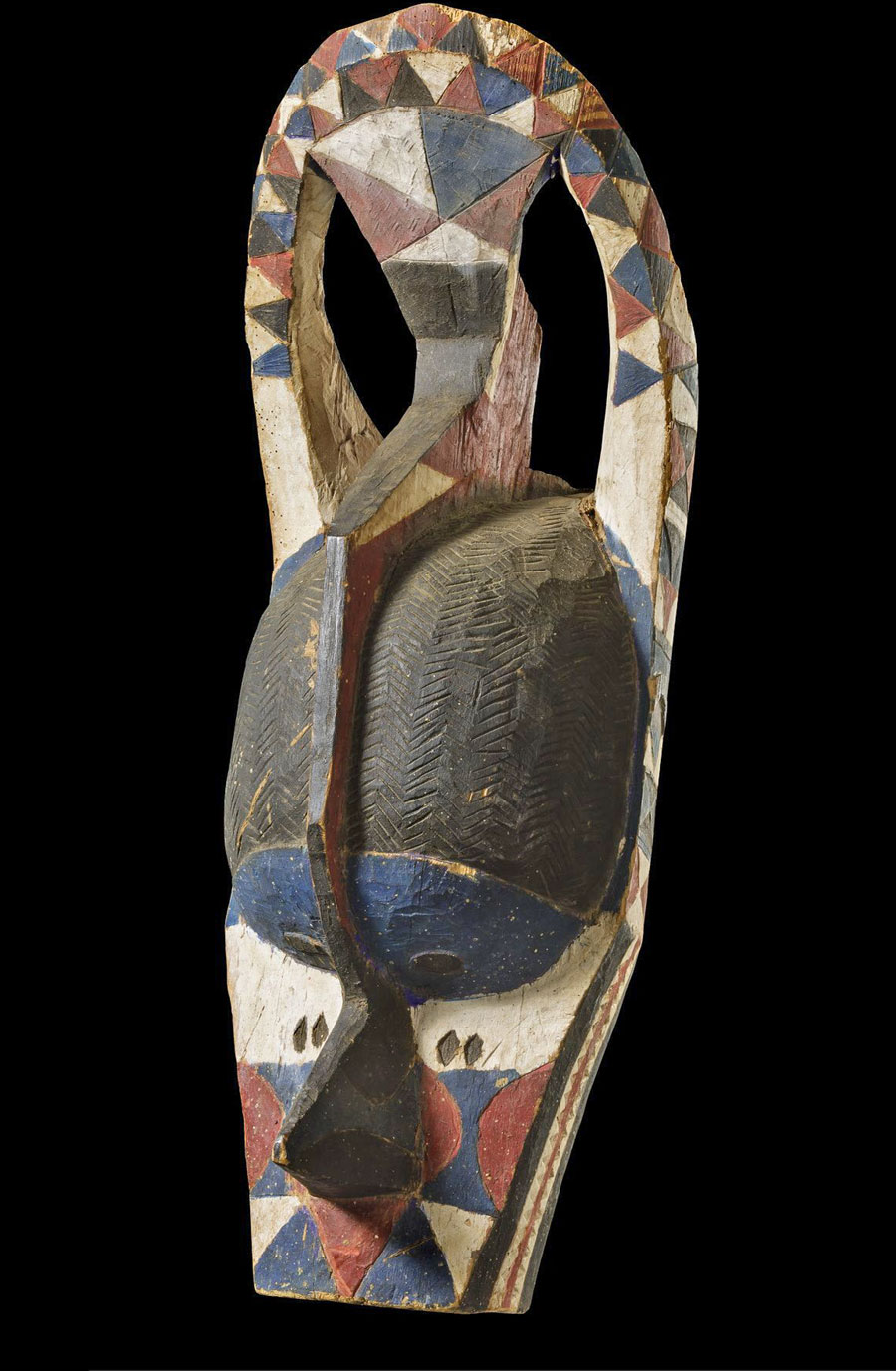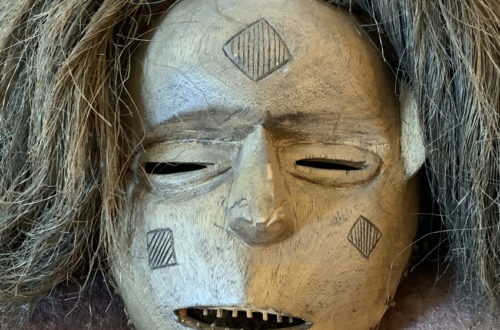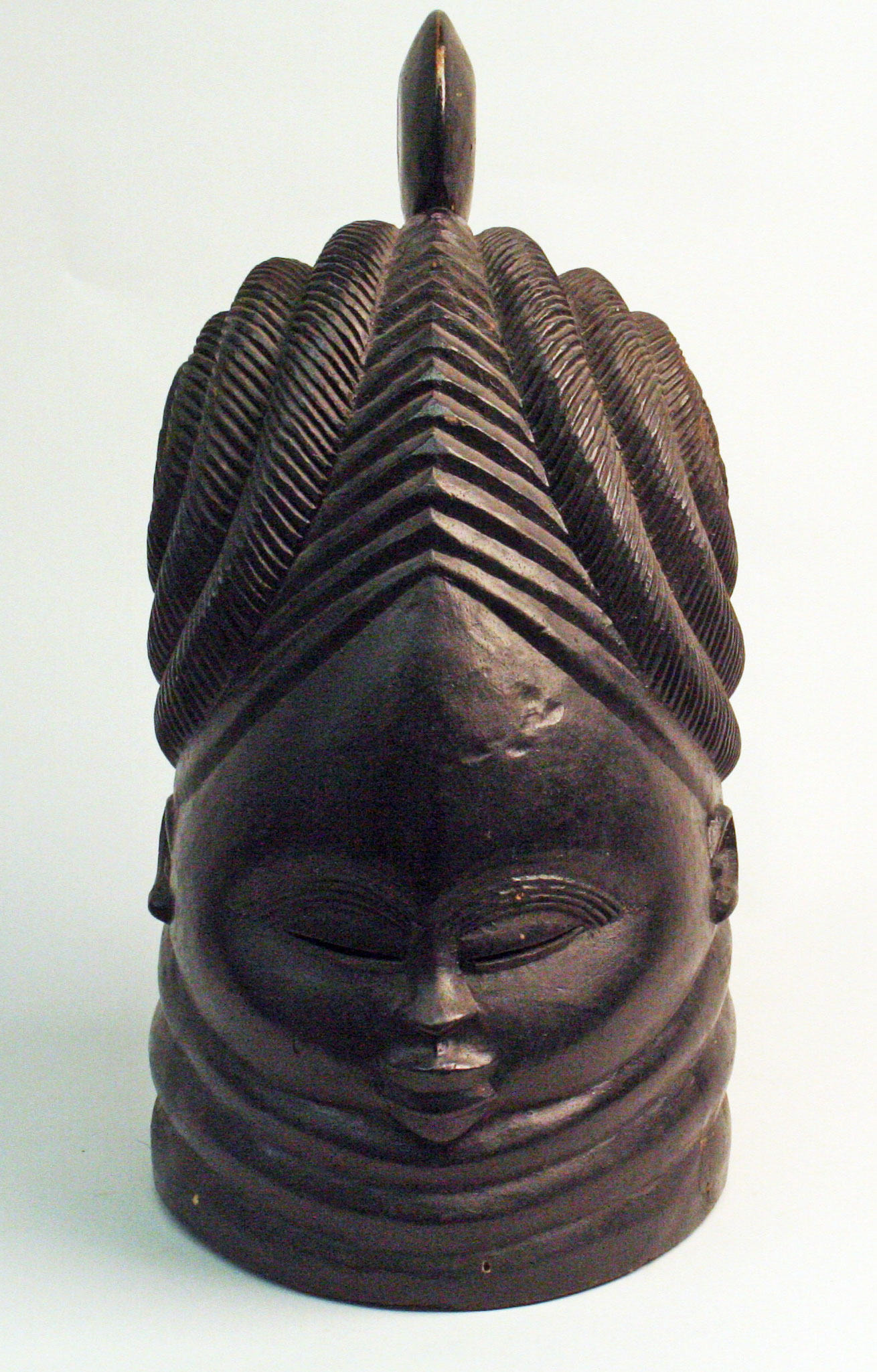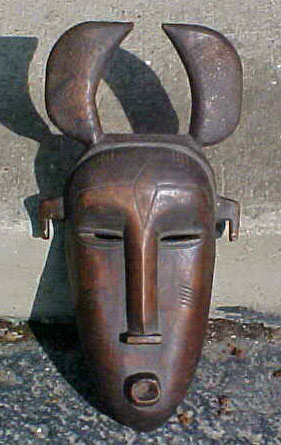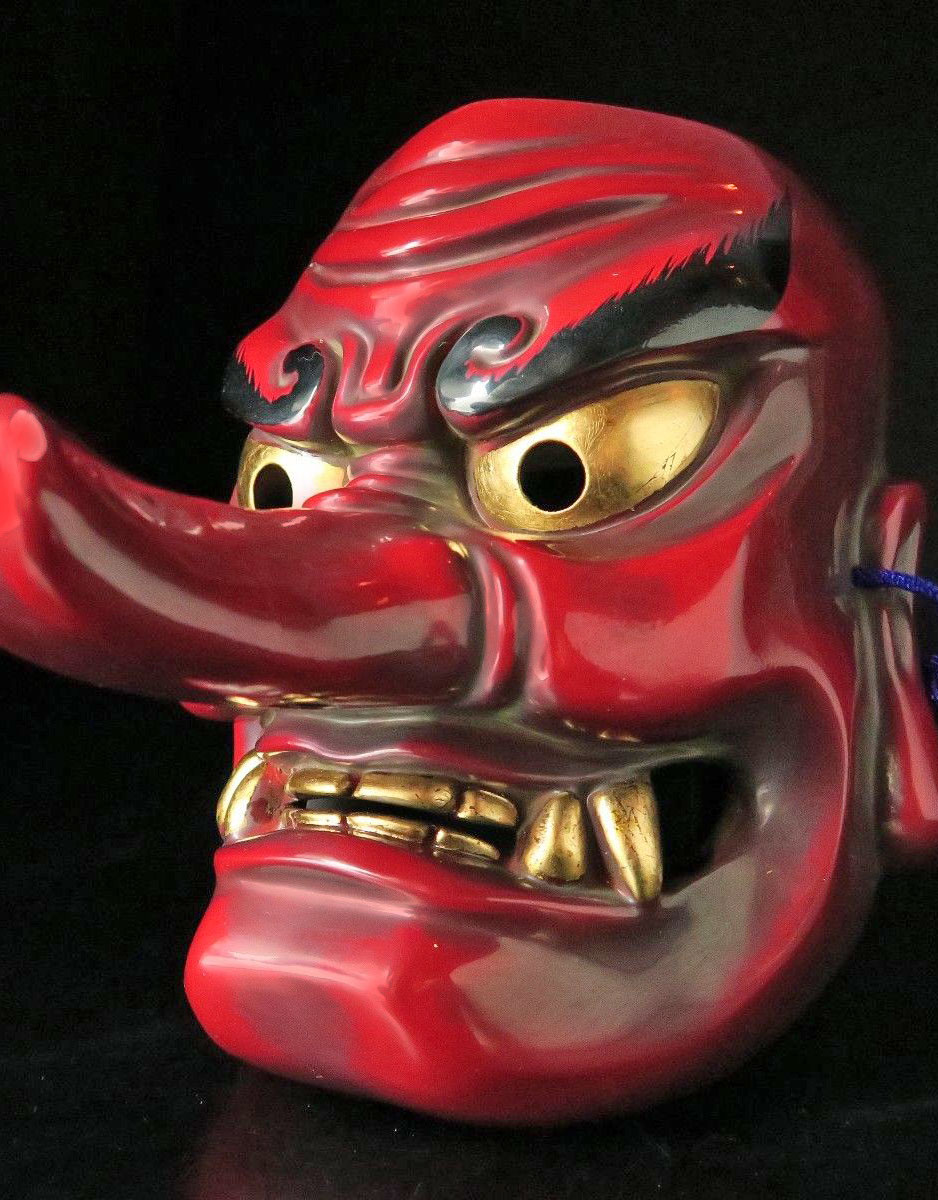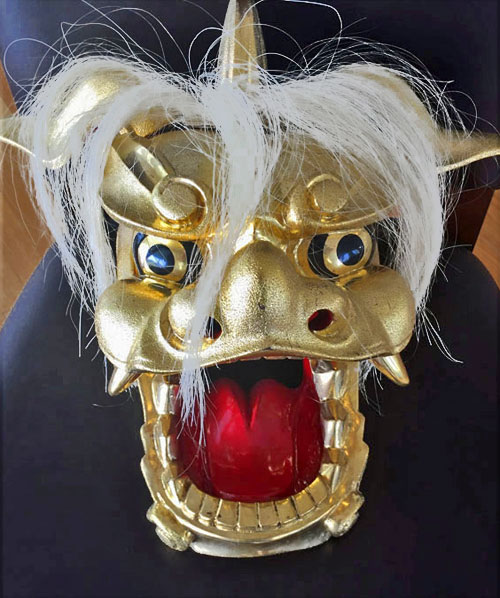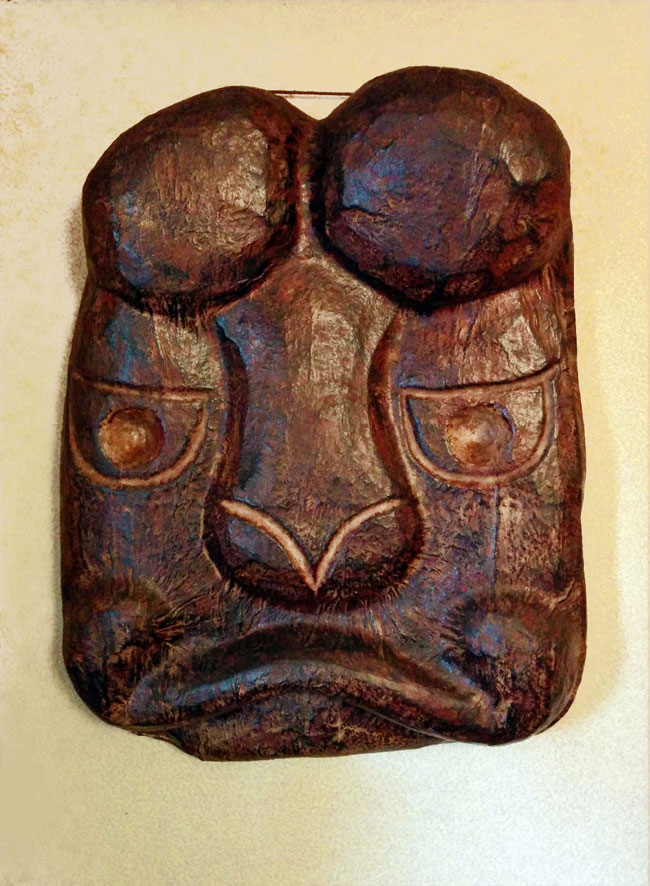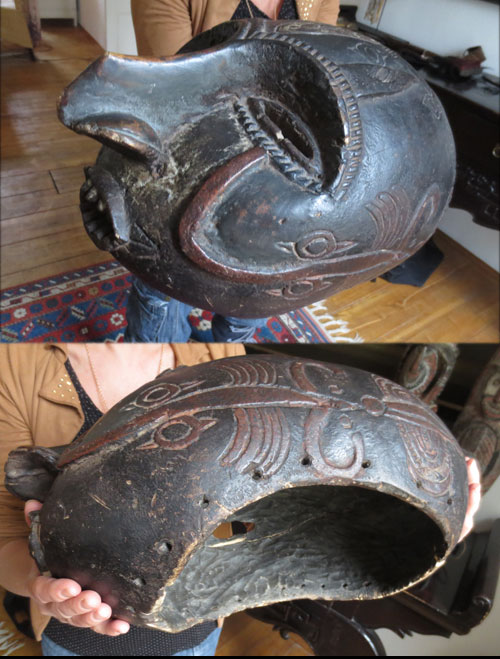Q: My opinion is that the masks field can be subdivided in 4 parts, considering two criteria “use” and “age”: As far as the ethnographic interest is concerned, the criterion “use” seems the most important to me, whatever old or recent. The criterion “age” intervenes mainly in the determination of the commercial value of the mask. – Old and used : the best, but certainly the most difficult to find today, and the most expensive – Old and not (or scarcely) used: unfrequented situation (the mask that has spent years in collections) – Recent and used : those used today in dances or dramas – Recent and not used :…
-
-
Japan uses the most masks
The picture shows a finely made, possibly very old, Japanese character mask. It could be Waka Otoko or Hatachi Amari from the Noh theater, or even a older Bugaku masks. I just don’t know. There so many masks, some of which go way back in history. There are more old masks in Japanese collections than anywhere. But there’s more. The Japanese use masks a lot. Usage includes Noh theater, village plays, temple performances, parades, celebrations, export, souvenirs for tourists, gifts, home decoration and sword fighting. No wonder collecting Japanese masks is so popular. On pages 54-56 of Masks of the World by Ibold and Yohn there are 24 shown and…
-
African mask that change the art world
You are looking at the famous Fang Nigil mask. Typically they are large, elongated masks covered with kaolin and featuring a face that was usually heart-shaped with a long, fine nose. This is one of the many African masks collected by European explorers in the 19th century. When the great modern artist of France first saw these amazing wood sculptures their concepts changed dramatically. Many contemporary artist, especially in the West, art still big admirers of African traditional art. The Ngil is my favorite! The Fang people used masks in their secret societies. Members of this male society wore the Ngil masks during the initiation of new members and the…
-
Tourist mask… from Africa or Asia?
Q: I am sincerely hoping you can help solve a 25 year mystery. When I picked up this mask in a junk shop in Yorkshire for £5 the shop owner ‘wanted it out’. In all those years I have searched until I have gone mask blind and never found anything similar. Could you please shed some light on it’s origins, is it ritualistic? It is finely carved, yet the pentagram on the forehead looks crude and possibly added later. Could it have had a stick at the bottom to hold over the face? The only fastening marks are where I removed vintage electrical wire used for hanging. I love it…
-
Contemporary African masks are rejected.
Mende Ode-Lay mask from Sierra Leone, Bobo butterfly mask from Burkina Faso, and the Dogon traditional mask from Mali were all used in the 21st century. They are truly authentic, and well made. I believe all three should be in collections, or famous museum with displays of African art. African traditional art has always evolved. Today masks are made with steel tools, painted with bright enamel, and often decorated with store-bought materials. Right now you can buy them for a very reasonable price. Almost all of the masks, as well as other carvings, put on the market today are supposed to look old and used. They are neither. What you…
-
Guatemalan Jaguar mask
Q: I have a picture of mask that was purchased out of country and need origin and value. Can I send a picture? It’s a set of two. Please email me. Tammy, 1457 A: This exciting mask portrays a jaguar (or tigre in Spanish) that is a character in several Guatemalan dances. These beautiful cats were once the top predator in Mexico all the way down to Argentina. Today they survive in only a few remote forest. How sad it is. Sorry, we only do one mask per person, per month. Nor do we appraise for free. Instead, we often end the answer with a letter grade. B
-
Big NWC Indian mask
Q: The mask is about 16 inches tall and about 12 inches wide. I believe it was acquired in the Pacific Northwest by my grandfather 40-or-so-years ago. I’m not sure what he paid for it but I believe it was an original. It was recently bequeathed to me along with 10 other masks from around the world. Kristian, 1455 A: Your mask is original in that it was carved by hand in the Pacific Northwest. I wish I knew what spirit or creature this big mask represent, and what specific culture it comes from. It was made by a lesser carver for sale to tourists. Perhaps someone will send in a…
-
Knights of old used masks
Q: Helmets count as a type of mask, right? I thought this one was particularly cool. Imagine showing up for a joust and your opponent is wearing this. Found on twitter @TheHiddenWorld Helmet (Savoyard Type) Germany 1620, Jay, 1454 A: Jay is right. The face part of a helmet 1s both for protection and intimidation. This is one of the most scary (and funny) pieces of armor from the middle ages I have ever seen. The other Savoyard helmet is not as funny, but it is in higher resolution so you can blow it up and see all the detail. We have a category called “Protection” which also contains gas…
-
Is masquerade still alive in Africa?
Yes. Though painted with store-bought colors, some of the masks used today do not look much different than those from a 100 years ago. Others, like the five I’m showing today, are different. African folk art is changing just like so many other things. After all, the continent has experienced colonization, Christianity, Islam and urbanization. These are being used now in there respective cultures. They are not meant to be sold as collectibles for white people. We call them modern traditional art and they are hard to find on the internet or anywhere else. Most of what we see for sale today are poorly carved masks that try to look…
-
Japanese mask with long nose
This is the famous Tengu. They’re known to inhabit the mountainous regions of Japan and fly from treetop to treetop carried by expansive feathered wings. Tengu are not necessarily evil creatures, but they probably shouldn’t be crossed. If you show the proper respect, they’ve been known to share their marital knowledge of the sword with us mortals, but beware their wrath at the same time. This powerful mask of Tengu is an extraordinary example of this character with its dramatic and spectacular face and nose. It represents the mischievous Forest God seen in Kyogen plays performed between Noh Dramas. It is both terrifying and intriguing, but it is a favorite…
